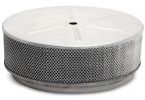New statutory requirements for fixed inert gas systems will enter into force on 1 January, 2016, as a result of changes to SOLAS, the Fire Safety Systems (FSS) Code and the International Bulk Chemical (IBC) Code.
- The fitting of a fixed inert gas system will be required for tankers of 8,000 tonnes deadweIGht (dwt) and over, constructed (keel laid) on or after 1 January, 2016. Previously, this applied only to tankers of 20,000 tonnes dwt and over.
- Tankers 8,000 dwt and over, carrying low-flashpoint cargoes, and constructed (keel laid) on or after 1 January, 2016, must be provided with a fixed inert gas system complying with Chapter 15 of the amended FSS Code (or an equivalent system – subject to acceptance by the flag administration)
- The existing clause in SOLAS Regulation II-2/4.5.5.2 for waiving the requirements for a fixed inert gas system still applies to all gas carriers, but for chemical tankers it now only applies to those constructed before 1 January, 2016. This means that chemical tankers constructed (keel laid) on or after 1 January, 2016, and carrying flammable cargoes such as those listed in the IBC Code chapters 17 and 18, will be required to have a fixed inert gas system, regardless of cargo tank size and tank washing machine capacities.
Operational requirements for chemical tankers
New SOLAS regulation II-2/16.3.3 clarifies the operational requirements for inert gas systems, and the sequence of applying the inerting medium into the cargo tanks.


